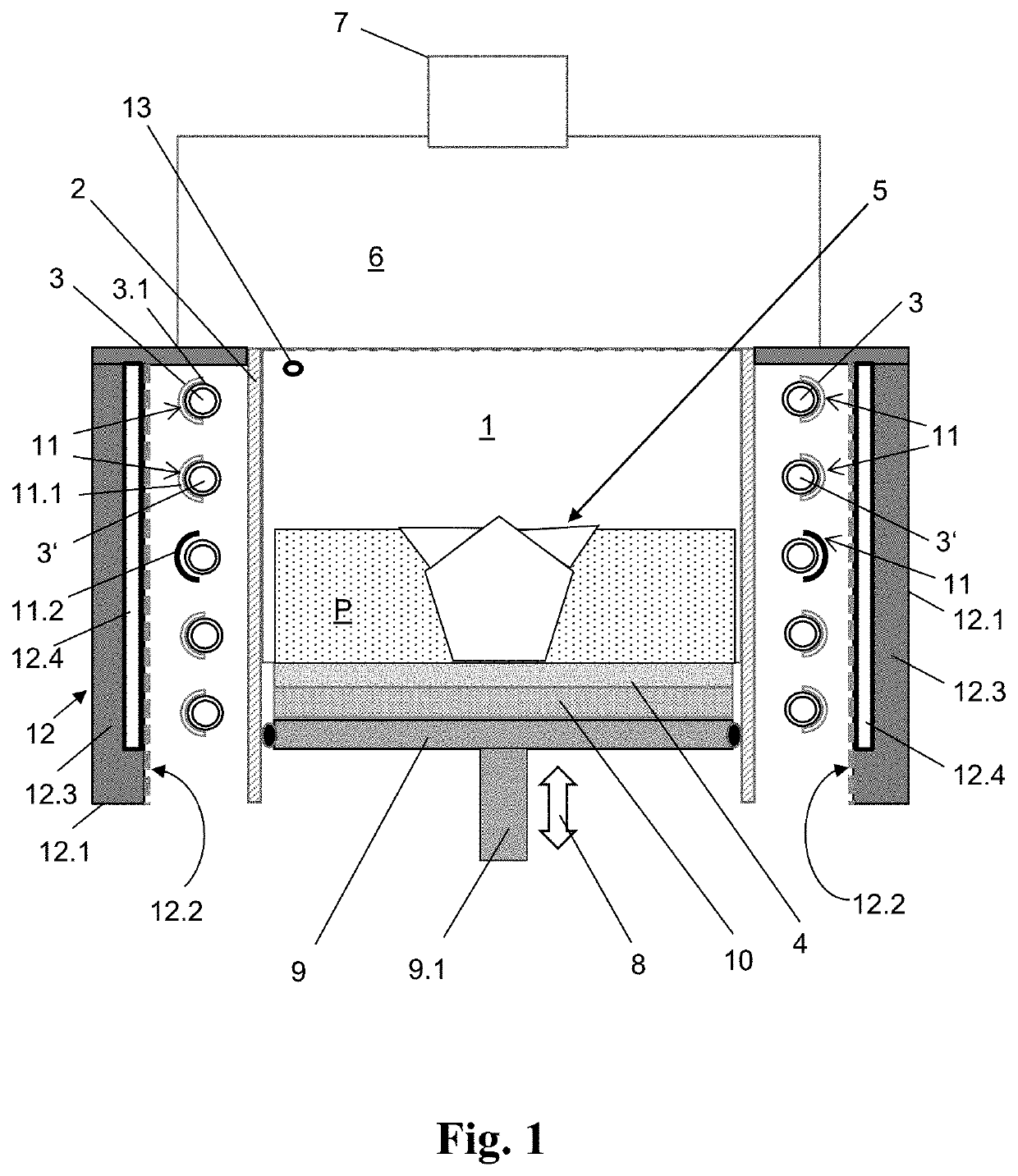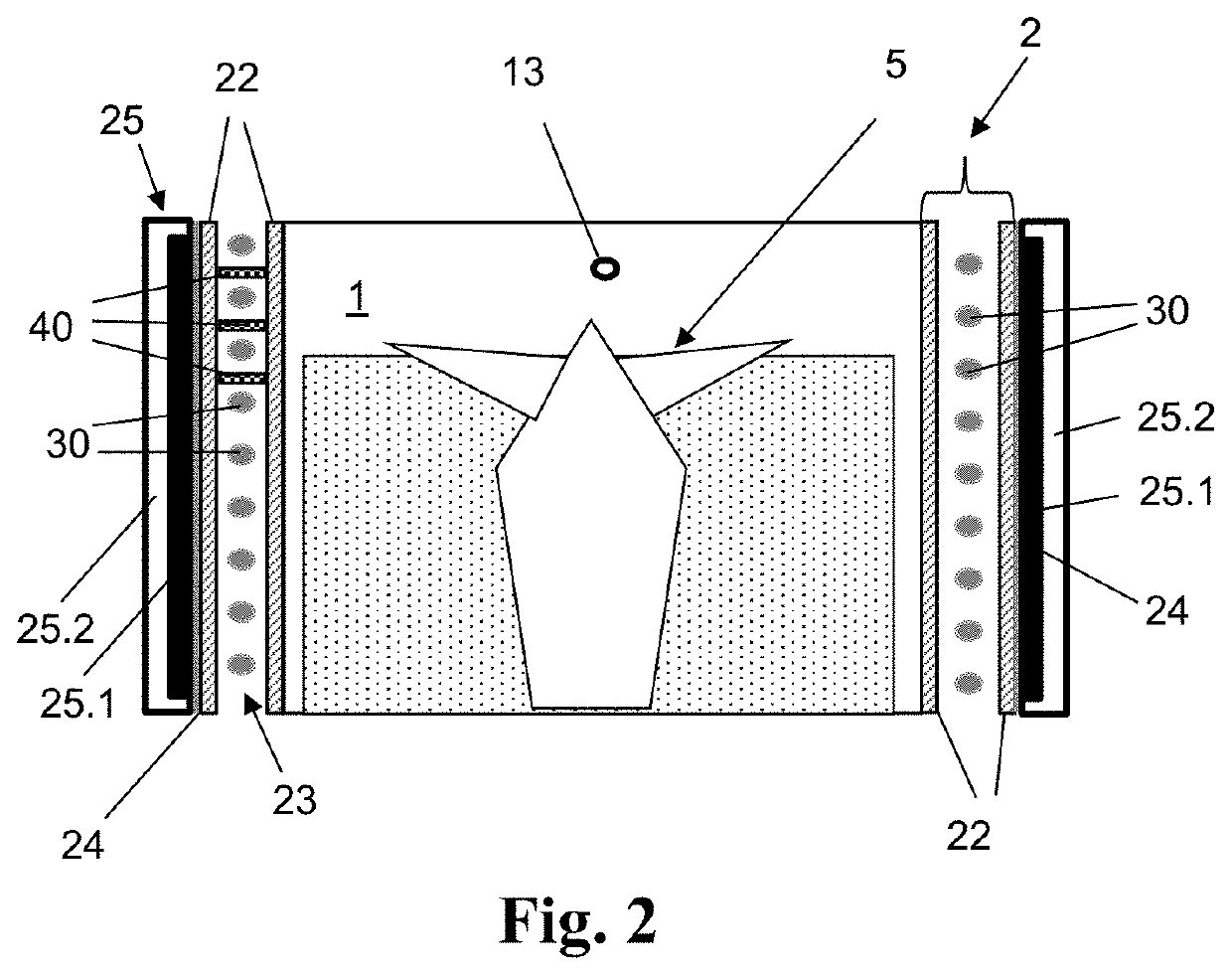Heating device with infrared radiating elements
a technology of infrared radiation and heating foil, which is applied in the direction of ohmic resistance heating, additive manufacturing, manufacturing processes, etc., can solve the problems of inefficient heat transfer to the sintering powder by this design, significantly higher process temperatures, and inability to reach temperatures above 200° c. with such a heating foil, etc., to achieve the effect of increasing radiation energy, reducing process costs, and reducing process costs
- Summary
- Abstract
- Description
- Claims
- Application Information
AI Technical Summary
Benefits of technology
Problems solved by technology
Method used
Image
Examples
Embodiment Construction
[0036]FIG. 1 is a schematic diagram of an embodiment of the heating device. The construction chamber 1 has a peripheral, cylindrical side wall or partition wall 2 composed of fused silica. A plurality of IR lamps 3, 3′ are mounted on the outside of the partition wall 2 and emit IR radiation towards the powder P or the 3D shaped part 5 on the construction platform 4 in the construction chamber 1. For detecting the temperature of the powder P and of the shaped part 5, the construction chamber 1 has a measuring cell 13 in the form of a thermal imaging camera. Above the construction chamber 1, the process chamber 6 is located, in which units (not shown here) for controlling the build process of the shaped parts 5 are accommodated. At the upper end of the process chamber 6, a laser unit 7 is arranged, shown schematically, which is capable of selectively sintering and / or melting the powder P with a high-energy laser beam issuing therefrom for producing the 3D shaped part 5.
[0037]The powde...
PUM
| Property | Measurement | Unit |
|---|---|---|
| wavelengths | aaaaa | aaaaa |
| temperatures | aaaaa | aaaaa |
| temperature | aaaaa | aaaaa |
Abstract
Description
Claims
Application Information
 Login to View More
Login to View More - R&D
- Intellectual Property
- Life Sciences
- Materials
- Tech Scout
- Unparalleled Data Quality
- Higher Quality Content
- 60% Fewer Hallucinations
Browse by: Latest US Patents, China's latest patents, Technical Efficacy Thesaurus, Application Domain, Technology Topic, Popular Technical Reports.
© 2025 PatSnap. All rights reserved.Legal|Privacy policy|Modern Slavery Act Transparency Statement|Sitemap|About US| Contact US: help@patsnap.com


